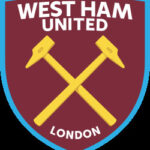The Ed Koch Queensboro Bridge, affectionately known as the 59th Street Bridge, stands as a monumental cantilever truss bridge gracefully spanning the East River. A vital artery connecting the bustling boroughs of Manhattan and Queens, this bridge shoulders the immense traffic flow of New York City. In 2022 alone, it facilitated the daily commute of over 142,000 vehicles, alongside 6,000 cyclists and 1,000 pedestrians, highlighting its indispensable role in the city’s transportation network.
Key Facts About the 59th Street Bridge
- Extensive Span: The bridge stretches a total of 3,725 feet in length.
- Comprehensive Length: Including its approaches, the total length reaches an impressive 7,449 feet.
A Journey Through Time: The History of the 59th Street Bridge
Conceptualized by the esteemed bridge engineer Gustav Lindenthal and brought to life architecturally by Henry Hornbosted, the 59th Street Bridge’s construction spanned from 1901 to 1909. Its grand opening on June 18, 1909, marked its debut as the longest cantilever bridge in the United States at the time. Among the four major bridges gracing the East River, this five-span cantilever truss bridge is unique as the only one not designed as a suspension bridge, specifically engineered to bear heavier loads.
Roosevelt Island’s strategic location provided ideal foundation conditions for the bridge’s piers, contributing to its structural integrity. The original construction utilized a staggering 75,000 tons of steel for the bridge and its approaches. The initial investment amounted to approximately $18 million, which included $4.6 million allocated for land acquisition.
The 59th Street Bridge features a dual-level design. The upper level accommodates four lanes of vehicular traffic, while the lower level is configured with five traffic lanes, comprising four inner roadways and a southern outer lane. Notably, the northern outer roadway is dedicated to pedestrian and bicycle traffic, promoting eco-friendly transit options. Over the decades, the bridge has undergone several modifications to adapt to evolving transportation needs. During the 1930s, the lower inner roadway’s trolley tracks were removed and repurposed for vehicular traffic. The 1950s saw the removal of transit tracks, alongside the construction of the north upper roadway and Queens Approach Ramps A, C, and D. Additionally in the 1950s, trolley tracks on the lower outer level were replaced with roadways, establishing the north and south outer roadways.
Recognized for its historical and engineering significance, the Ed Koch Queensboro Bridge was officially designated a National Historic Landmark on November 23, 1973.
Ongoing Enhancements: Current Projects on the 59th Street Bridge
Upper Deck Replacement Project
The ongoing rehabilitation of the 59th Street Bridge continues under Contract No. 10, with a primary focus on the comprehensive replacement of the upper deck.
Ed Koch Queensboro Bridge Upper Deck Replacement Presentation (pdf)
Project Objectives:
- Complete upper deck replacement on the main bridge structure.
- Rehabilitate the upper decks on both approach sections.
- Conduct structural steel rehabilitation work.
- Replace deck joints and barriers for enhanced safety.
- Upgrade lighting and drainage systems.
- Perform incidental bridge painting for aesthetic and protective purposes.
- Replace the fire standpipe system to improve emergency response capabilities.
Potential Impacts During Construction
- Expect periodic night and daytime lane closures, with announcements made in advance.
- The North Outer Roadway, used by pedestrians and cyclists, may experience narrowing during off-peak hours, reduced by up to 50 feet.
- Pedestrian and bicycle access will be continuously maintained, though caution is advised for users.
- At least one lane of traffic in each direction will remain open on both the upper and lower roadways throughout the project.
Construction Project Contact Information
For further details regarding this project, please reach out to Anita Navalurkar, the community liaison for the Ed Koch Queensboro Bridge Rehabilitation/Contract No. 10, via email at [email protected] or by phone at 917-370-9770.
Past Efforts: Previous Contracts for Bridge Maintenance
Contract 5 (1995-2000): Focused on the rehabilitation of the Lower Outer Roadways, encompassing both main spans and approaches. This included the removal and replacement of the roadway deck on the North and South Outer Roadways, along with the replacement or reinforcement of stringers, floor beams, tie angles, plates, and bearings. New curbs, barriers, and railings were installed, along with a modernized drainage system. Total investment: $227 million.
Contract 6 (2003-2008): Addressed the rehabilitation of miscellaneous components. Work included microsurfacing on upper roadways, rehabilitation of Manhattan Approach Arch opening infills west of the First Avenue Arch on both North & South Sides, and the installation of granite bollards in the Manhattan Approach Plaza at the Kiosk, among other improvements. Total investment: $50 million.
Contract 7 (Terminated): Queensboro Bridge Structural Seismic Retrofit Contract. This contract was terminated before completion.
Contract 8 (2009-2010): Involved the replacements of aviation lights to ensure continued safety and compliance with aviation regulations. Total investment: $2 million.
Contract 9 (2009-2010): Dedicated to the Eyebar and Pin Investigation, focusing on critical structural assessments. Total investment: $0.62 million.
Future-Proofing the 59th Street Bridge: Upcoming Projects
The Ed Koch Queensboro Bridge benefits from continuous upkeep to maintain a State of Good Repair. This is achieved through both significant capital projects and routine in-house repairs, ensuring its components are consistently improved to withstand environmental factors and heavy vehicular traffic.
Updates on the Ed Koch Queensboro Bridge South Outer Roadway Project

